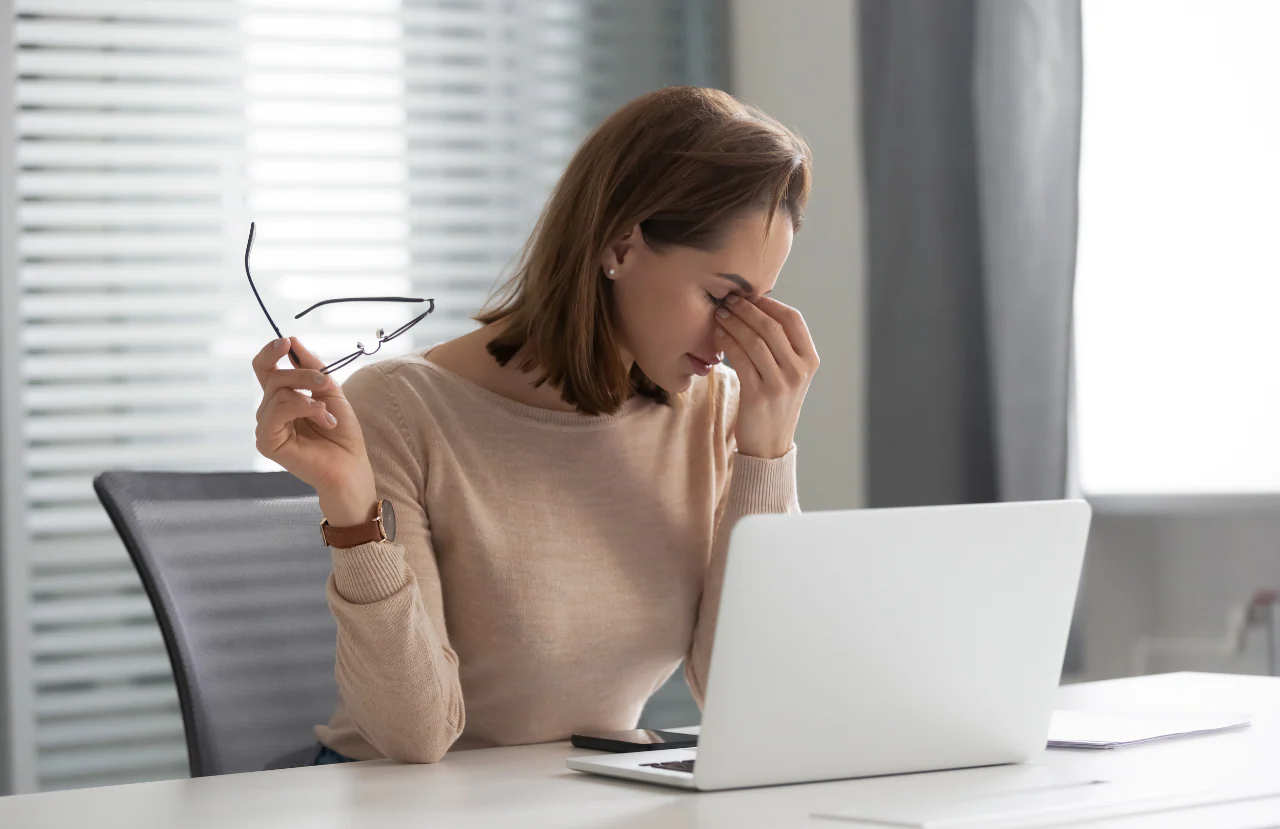Few people today can avoid screens. Laptops, tablets, smartphones and digital displays are now part of everyday life, whether you’re working from home, studying, gaming or staying connected with family. With so many hours spent staring at screens, it’s no surprise that more people than ever are experiencing the uncomfortable symptoms of digital eye strain.
Often described as computer vision syndrome, digital eye strain is not a single condition but a collection of symptoms triggered by prolonged screen use. Tired eyes, headaches, blurred vision and neck or shoulder pain are all common complaints. Some people even feel their eyes sting or water after a day spent moving between work emails, video calls and scrolling social media.
While it can feel like an unavoidable consequence of modern life, help is available — and an optician can play an important role in both diagnosing and easing digital eye strain.
Why Screens Make Eyes Work Harder
Our eyes were never designed for staring at a bright, fixed point up close for hours at a time. Looking at screens places extra demands on the tiny muscles that help the eyes focus and move together.
When reading printed text, people naturally blink more often. But research shows that blink rates drop when focusing on a screen, leading to dry, uncomfortable eyes. Poor lighting, glare from overhead bulbs or windows and the small text sizes on smartphones can all make the problem worse.
Over time, the strain can build up, leaving your eyes feeling fatigued. This is why it’s common for people to notice that vision is fine in the morning but becomes blurry or uncomfortable by late afternoon.
How an Optician Can Help
An optician does far more than check whether you need glasses. Regular eye exams can reveal whether your eyes are coping well with screen use or if subtle problems with focusing, eye teaming or dryness are contributing to discomfort.
Many people don’t realise they might have a slight prescription that makes long hours at a screen more tiring. Even small focusing errors can lead to headaches and blurred vision after extended use. An optician can carry out a detailed examination and, if needed, prescribe glasses or contact lenses that ease the strain.
For people who already wear glasses, an updated prescription may help. Lenses can be optimised for screen distance, which is different from the distances used for reading a book or driving. Some opticians offer occupational lenses that provide a larger area of clear vision at the distances used for computer work, which can be more comfortable than standard varifocals or reading glasses.
Understanding Blue Light
In recent years, there’s been growing interest in blue light filtering lenses. Screens emit blue light, which can scatter more in the eye and contribute to glare and visual fatigue. Some people find that lenses with a special filter reduce glare and help their eyes feel more comfortable during long hours of work.
While research on the exact benefits of blue light lenses continues, an optician can help you decide if they are worth trying for your specific situation. They can also check that any other factors, such as dry eye, are being properly managed rather than relying solely on coatings or filters.
Practical Advice for Screen Users
Good eye care is not just about what you wear on your face but also how you use your screens. Many opticians offer practical tips tailored to your lifestyle. For example, the 20-20-20 rule — taking a 20-second break to look at something 20 feet away every 20 minutes — can help reduce strain.
Your optician might ask about your workstation setup too. Screen height, distance, lighting and even the position of your chair can affect how your eyes feel at the end of the day. Adjusting these small details can ease pressure on your eyes and neck.
If dry eye is an issue, your optician can recommend suitable eye drops or lifestyle changes to keep your eyes hydrated and comfortable. They can also check for underlying conditions that may need more specialised care.
Helping Children and Teens
Digital eye strain is not just an adult problem. Many children and teenagers spend hours on tablets for schoolwork and gaming. Younger eyes are still developing, so prolonged screen use can lead to tired eyes and headaches that affect concentration and sleep.
Opticians can test children’s vision and spot early signs of strain or prescription changes. They can also offer advice to parents on screen breaks, lighting and good posture to protect young eyes in the digital age.
Long-Term Eye Health
People often ask whether digital eye strain causes permanent damage. In most cases, the symptoms are temporary and can be managed with good habits and the right eyewear. However, the discomfort can become chronic if left unaddressed, and ignoring regular eye checks may allow other vision problems to develop unnoticed.
Seeing an optician for regular exams means that any changes are picked up early and your prescription stays up to date. It’s also an opportunity to talk through any new symptoms and get trusted advice on keeping your eyes comfortable.
Taking the Strain Out of Modern Life
Digital eye strain is an unfortunate by-product of the connected world we live in. But with help from a qualified optician, it doesn’t have to become an everyday frustration. From checking your vision to tailoring your lenses, sharing practical advice and supporting you with personalised solutions, your optician is an important ally in keeping your eyes healthy — no matter how many hours you spend in front of a screen.

